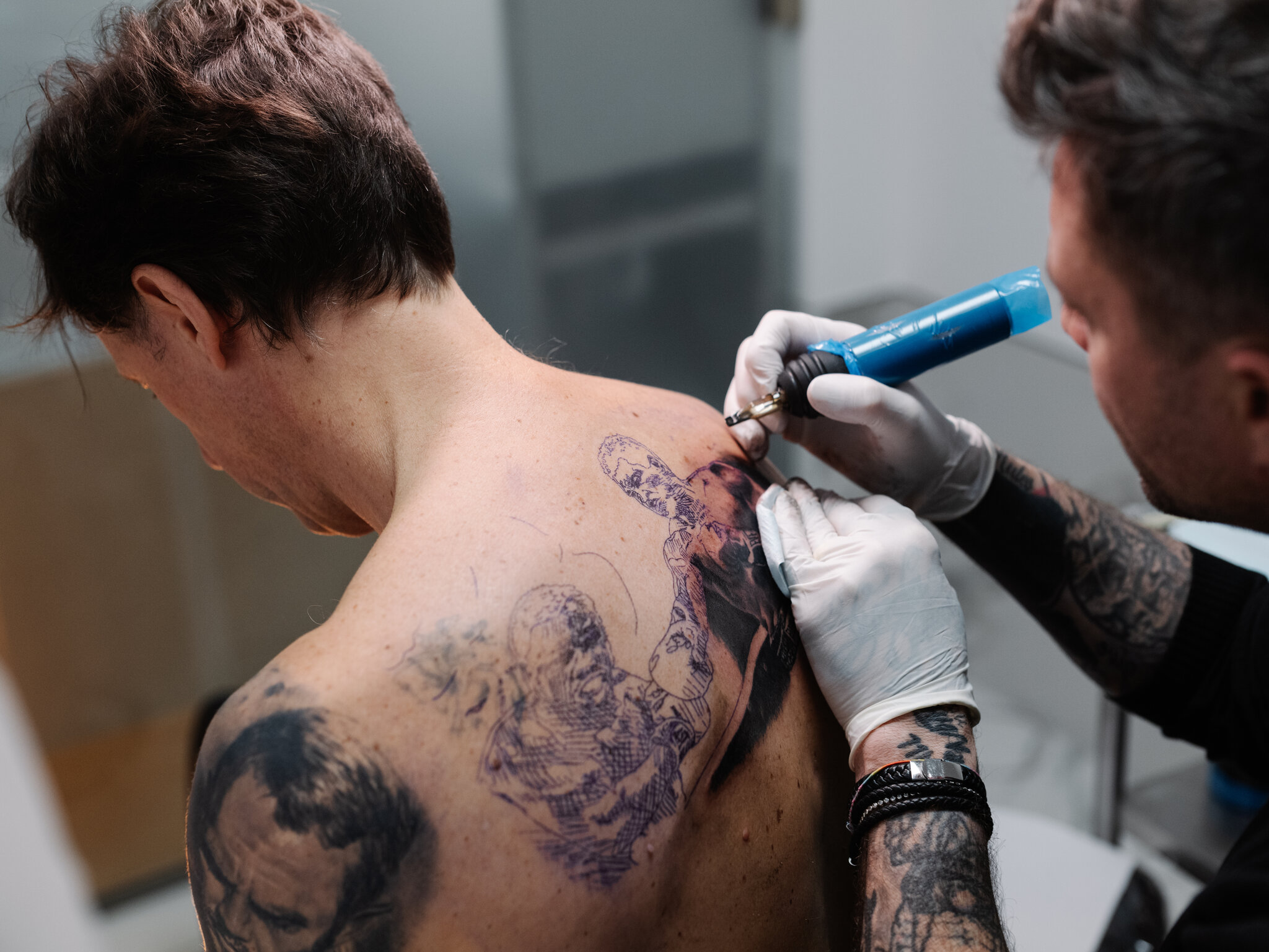As a tattoo enthusiast, you’ve likely admired the colorful, intricate designs that adorn your friends’ and families’ skin. From delicate black linework to vivid watercolor pieces, today’s tattoo artistry allows people to permanently decorate their bodies with meaningful symbols and illustrations.
But what happens when you go under the needle filled with excitement, only to end up with a tattoo that looks faded, patchy, or just plain bad? Unfortunately, tattoo ink doesn’t always take or hold well in the skin. Even in the hands of a skilled artist, many factors can cause the pigment to fall short of expectations.
In this article, I’ll draw on my decade of experience as a tattooist to break down the top reasons your new ink may not turn out as planned. We’ll explore issues like improper needle depth, ink density, skin elasticity, machine settings, and aftercare mistakes. I’ll also provide tips to help you get the best outcome possible for your next tattoo. By understanding why tattoo ink sometimes fails to properly embed in the dermis layer, you can work with your artist to maximize the chances of creating a vibrant, lasting piece of body art.
Can your skin push out tattoo ink?
As a professional tattoo artist with over 10 years of experience, I’ve seen many reasons why tattoo ink sometimes doesn’t take properly in the skin. Here are some of the most common causes:
Ink not shaken enough to disperse pigment
Tattoo ink needs to be properly shaken before use to disperse the pigment evenly throughout the liquid. If the ink is not shaken thoroughly, the pigment can settle at the bottom of the container. When this happens, you end up injecting more clear liquid and less pigment into the skin. This leads to faint tattoos or uneven shading.
To prevent this, I always make sure to shake up each ink for at least 60 seconds before pouring it into ink caps. I also shake the ink cap again right before dipping my needle into it to pick up more pigment. Proper agitation of the ink ensures the pigment stays evenly mixed.
Too much petroleum jelly clogged the tube or stayed on the needle
As a tattoo artist, I regularly apply a thin layer of petroleum jelly (like Vaseline) during sessions. This helps the needle glide smoothly across the skin. However, too much petroleum jelly can be problematic in two ways:
- It can clog up the tiny opening in the needle tube, preventing ink flow.
- It can stick to the needle, blocking it from effectively penetrating the skin.
Before starting a tattoo, I wipe off any excess grease from the needle. I also avoid over-lubricating, using the minimum amount needed. This prevents blockages so ink flows freely.
Skin is bouncing from needle and not getting proper penetration
Sometimes the skin can be extra resilient and bounce away when the needle tries to puncture it. This causes poor ink deposition since the needle fails to go deep enough into the dermis layer of skin.
Areas like the hands, feet, and ribs tend to be more sensitive and prone to bouncing. I adjust my technique in these spots by:
- Stretching the skin taut to make it firmer
- Using a lighter hand to puncture with less force
- Going slower to allow more needle penetrations
This helps the needle push past the bounce to deliver the ink properly. I also suggest clients use a numbing cream for extremely sensitive areas.
Tattoo machine not tuned well

A tattoo machine has to be tuned just right – not too loose and not too tight. The tension levels affect:
- How far the needle protrudes
- Its oscillating speed
- How deeply it can penetrate
If the machine is tuned too loose, the needle won’t go deep enough. If it’s too tight, it can cause excessive trauma and poor ink delivery.
I always test my machines on fake skin before starting. Then I periodically check tension and make micro-adjustments during the session if needed. Properly tuned machines greatly improve ink saturation.
Body rejects the ink
In some cases, a person’s immune system rejects or fights off the tattoo ink, causing poor ink retention. There are a few potential causes:
- Allergic reaction – Allergies to specific pigments or ingredients in ink can cause reactions. Black ink tends to be the biggest offender. I screen clients ahead of time for any known allergies.
- Medications – Certain drugs like blood thinners, antibiotics, and diabetes medications increase the risk of poor healing and ink rejection.
- Skin conditions – Skin issues like eczema, psoriasis and autoimmune disorders can lead to poor tattoo retention.
- Previous trauma – Old injuries, burns, and scars already have thick scar tissue that often rejects ink. I avoid tattooing directly on top of these areas whenever possible.
For people prone to rejection, I recommend starting with a small tattoo first to see how the skin responds. I also advise proper aftercare to support the healing process.
My personal recommendation
- Thoroughly research your artist – Make sure to select a reputable tattoo artist with a proven portfolio and excellent reviews. An experienced professional is less likely to make mistakes.
- Discuss medical conditions – Disclose any medical issues or medications you are taking, as they can interfere with healing and ink retention.
- Avoid problematic areas – Ink often doesn’t take well over scars, moles, and bony areas. Inform your artist of any skin issues.
- Hydrate before and after – Drink plenty of water before and after your tattoo to help your skin absorb the ink better.
- Follow aftercare diligently – Carefully follow your artist’s instructions for cleaning, moisturizing, and protecting the tattoo during healing. This helps the ink settle in.
- Avoid sun exposure – Keep your new tattoo completely hidden from sun for 2-4 weeks. UV rays can cause the ink to fade.
- Get touch ups – If you do experience poor retention, wait until fully healed and get a touch up from your original artist.
- Be patient – It can take 4-6 weeks for the ink to fully settle and appear as vibrant as it will look long-term.
- Avoid trauma – Be extra gentle with a new tattoo, avoiding friction that can pull out ink.
By taking these precautions before and after your tattoo session, you can minimize risks and help the ink properly integrate into your skin.
Conclusion
Getting a tattoo can be an exciting experience as you permanently transform your body into a work of art. However, nothing is more disappointing than realizing the ink failed to properly take in your skin. Those dark defined lines turn patchy, vivid colors look faded, and you’re left with a less than satisfactory permanent piece.
As we’ve explored, many factors can cause poor ink retention, from not shaking the pigment enough to issues with your skin type or immune system. While modern tattooing methods are quite advanced, there is still an art and science to getting the ink to properly integrate into the dermis.
The good news is that by selecting an experienced artist, taking care of your body before and after, following proper aftercare, and scheduling touch-ups, you can minimize the chances of your tattoo ink not taking well. While some factors are out of your control, being an informed client and caring properly for your new art will provide the best opportunity for vibrant, lasting results.
So don’t let the risk of poor retention deter you from getting amazing body art. By understanding the reasons tattoo ink may not take, you can work with a talented tattooist to create stunning designs that will stay true for years to come.

